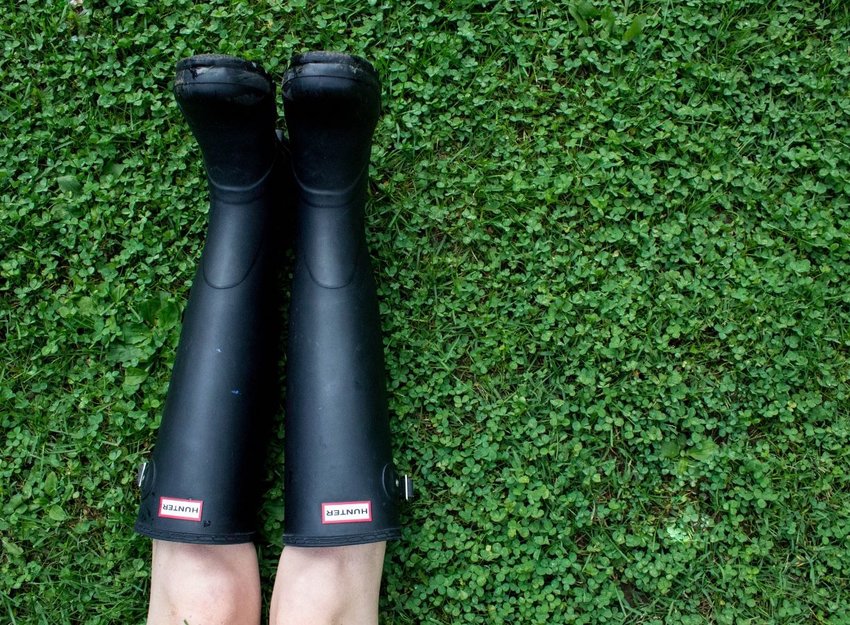Back in the 2000s, the book series and movie adaptations for "Sisterhood of the Traveling Pants” were global hits. But in the United Kingdom, the title elicited more than a few giggles. The reason? "Pants" (derived from underpants) is a common name for underwear — not jeans, as meant in the series. This is just one example of how local slang has shifted what we call different items of clothing among various English dialects. Brush up on these terms, so you’re always dressed appropriately for wherever your travels might take you.
Rain boots – rubber boots – Wellingtons – Wellies – galoshes
If the forecast calls for wet weather, you’ll want to pull on a pair of waterproof boots, which are known in North America as rubber or rain boots. In Australia and the U.K., however, they pay homage to the Duke of Wellington, who popularized this style of boot in the early 19th century. In America, galoshes and boots are interchangeable, but in the U.K., galoshes specifically refer to a rubber boot slipped over another type of shoe to protect them from puddles.
Sweater – jumper – pullover – sweatshirt
Here's the long and the short version of this debate. If you want to be warm, reach for one of these. All of these terms refer to (typically) long-sleeved tops. The first three relate to knitted tops, whereas a sweatshirt is usually made from some sort of cotton sweatsuit material. Sweaters and pullovers are pretty location specific to the U.S., while jumper is unique to the U.K. and Australia. It comes from the word jupe, an old-fashioned name for a jacket or tunic. Here's a fun fact. Both sweater and sweatshirt were derived from clothing literally designed to make you sweat (and potentially lose weight).
Tank top – vest – singlet
A sleeveless top — usually with straps — is known as a tank top, which is a name derived from the type of swimsuit it resembles — a tank suit. In the U.K., however, a top like this is used as a base layer or undershirt and is known as a vest. This might confuse North Americans whose understanding of a vest is the exact opposite — a layer you wear over top of other clothes, rather than under. Globally, the word singlet is the most widely adopted and stems from an 18th-century garment that was unlined or had a single face as virtually all tank tops do to this day.
Knit hat – beanie – toque
Keep your head warm in the winter by donning one of these lovely hats. A knit hat is the most technically accurate term, but slang-y spinoffs such as beanies and skullies (U.S.) have gained favor globally (both of which stem from old-timey nicknames for your head "bean"). If you’re in Canada, however, you’ll hear most residents referring to toques (pronounced "too-ke"). Canada, as a bilingual nation, picked up plenty of French words from their settlers. This is just one of them that’s stuck around and spread across the country.
Sneakers – runners – trainers
Before you work out, you’ll likely lace up a pair of gym shoes that are sometimes referred to as running shoes, walking shoes, basketball shoes, or tennis shoes. Sneaker is the globally accepted term, but popular abbreviations still prevail. In Canada, you grab your "runners." This term derives from running shoes. In the U.K., however, trainers will have you ready to practice any sport.
Sandals – flip flops – thongs
The Greek word “sandalon” once described a type of wooden shoe, but was eventually shortened to just "sandals." The U.K. popularized the term flip flop in the 1960s to describe the actual sound that shoes without a heel strap make when you walk. Prior to the ’70s, flip flops were known as thongs, a type of sandal worn since the days of the ancient Greeks and Romans. When a certain skimpy style of underwear or swimsuit with a single strap became popular in the ’80s, however, the word fell out of fashion to describe footwear. Australia still uses it though!
Overalls – dungarees
Pants with a bib, also known as slops, were first worn by the working class in the 1700s. They also became known as overalls since they were worn over the clothes they were trying to protect. "Dungarees,"a common name for overalls in the U.K., actually stems from the British Colonial presence in India. “Dungri” is a type of thick, cotton cloth that's used to make sails, tents, and working pants. It was exported from India to Britain.
Credit: srz/ Unsplash

